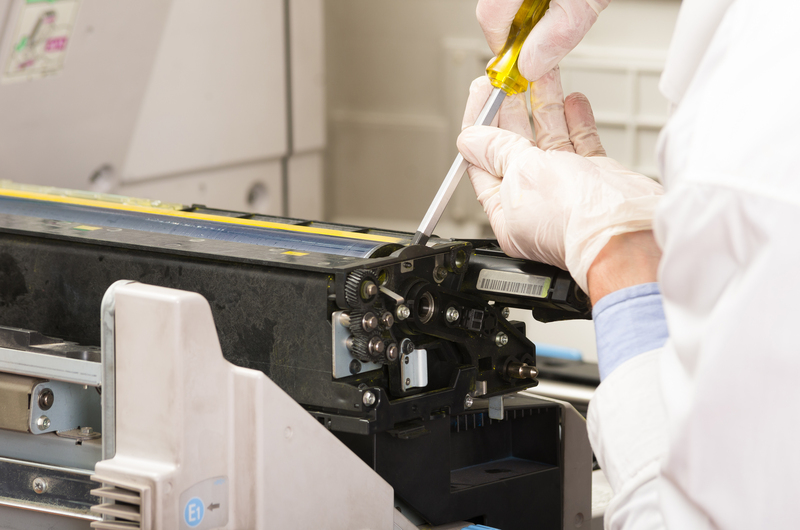Is it More Than Just Trash? Defining Hazardous Waste
Hazardous waste is a term that carries weight far beyond the realm of everyday garbage. With growing concerns about environmental health, public safety, and sustainable development, understanding what makes waste "hazardous" is more crucial than ever. In this comprehensive guide, we'll unravel the definition of hazardous waste, explore its diverse types, examine the dangers it poses, and provide insights into its proper management. Let's answer the pressing question: Is it more than just trash?
Understanding Hazardous Waste: More Than Garbage
People often associate the word "trash" with harmless refuse--something we dispose of every day. However, not all trash is created equal. Some waste materials carry properties that make them potentially dangerous to humans, animals, and the environment. This type of waste is known as hazardous waste.
Hazardous waste is generated from a wide range of sources--industrial manufacturing, hospitals, laboratories, households, and even farming. The U.S. Environmental Protection Agency (EPA), along with many global authorities, offers precise criteria to define hazardous waste. These standards help us evaluate the risks linked to different waste products and provide guidelines for their handling and disposal.
The Core Characteristics of Hazardous Waste
To be classified as hazardous, a material must exhibit at least one of the following traits:
- Toxicity: Contains substances harmful or fatal to living organisms, even in low concentrations. Examples include lead, mercury, and arsenic.
- Reactivity: Can react violently with water or common chemicals, produce toxic gases, or explode under normal conditions (e.g., certain industrial chemicals).
- Ignitability: Has the ability to catch fire easily and sustain combustion, such as solvents like acetone or gasoline.
- Corrosivity: Capable of corroding metal containers or body tissues. Corrosive materials include strong acids (like sulfuric acid) and bases (like sodium hydroxide).
Hazardous waste can exist in any state: solid, liquid, or gas. Its source and form influence how it is classified, transported, and disposed of.

Different Types of Hazardous Waste
Hazardous waste is not one-size-fits-all. It comes in many forms, and agencies such as the EPA and the United Nations have created systems to define and categorize hazardous wastes. Here's a closer look at the types:
1. Listed Waste
- F-List (Non-specific source wastes): These wastes come from common industrial processes such as cleaning or degreasing. They are considered hazardous regardless of the industry producing them.
- K-List (Source-specific wastes): These are wastes from specific industries, like petroleum refining or pesticide manufacturing.
- P-List and U-List (Discarded Commercial Chemical Products): These are pure or commercial chemical products that are hazardous when thrown away, such as some pharmaceuticals and pesticides.
2. Characteristic Waste
- Based on the intrinsic properties discussed earlier (toxicity, ignitability, corrosivity, reactivity).
3. Universal Waste
- This includes common items like batteries, fluorescent bulbs, certain pesticides, and some electronics. While not as acutely hazardous, they pose wider environmental risks due to their prevalence.
4. Mixed Waste
- Contains both hazardous and radioactive components. Handling and disposal require extra precautions and regulatory oversight.
Why Should We Care About Hazardous Waste?
Many people underestimate the impact of hazardous waste. Unlike typical trash, its dangers often extend far beyond the landfill or incinerator:
- Health risks: Direct contact, inhalation, or accidental ingestion can result in severe health issues, ranging from burns and poisoning to cancer and neurological damage.
- Environmental contamination: Improper disposal leads to contaminated soil, polluted water bodies, and toxic air emissions.
- Biodiversity threats: Ecosystems are especially vulnerable to hazardous waste spills and leaks. Toxic chemicals can decimate local wildlife and disrupt biological chains.
- Economic costs: Cleanup of contaminated sites (think Superfund projects) demands enormous public and private resources.
Is All 'Dangerous' Waste Hazardous by Law?
Interestingly, not every waste that poses a risk is legally classified as hazardous. Only wastes meeting specific government definitions and testing protocols are formally regulated. This emphasizes the need for businesses and individuals to understand both legal requirements and best environmental practices.
How Is Hazardous Waste Identified and Labeled?
Proper identification of hazardous waste is essential for ensuring compliance and safety. Regulatory agencies require that any material suspected of being hazardous undergoes detailed evaluation, which includes:
- Generator Knowledge: The party producing the waste assesses its characteristics based on process knowledge and chemical inventory.
- Analytical Testing: Laboratory analysis checks for harmful properties like toxicity levels or corrosivity.
- Listing Reference: Comparison against official lists (F, K, P, U as previously mentioned).
- Manifesting and Labeling: Proper containers must have clear, durable, and accurate labels such as "Hazardous Waste - Federal Law Prohibits Improper Disposal".
Correct labeling is critical--not just for regulatory reasons but to protect everyone handling, transporting, or disposing of the material.
Sources of Hazardous Waste
Industrial
- Manufacturing plants (chemicals, electronics, textiles)
- Automobile repair and maintenance
- Mining operations
Medical & Research
- Hospitals and clinics (pharmaceutical waste, chemotherapy byproducts)
- Laboratories (solvents, reagents, experimental byproducts)
Household
- Cleaners, solvents, oils, paints, batteries, pesticides, electronics, and more
- Improperly disposed medications
Agriculture
- Pesticides, herbicides, animal pharmaceuticals
- Fertilizer runoff and toxic sludge
These examples show that hazardous waste is present in nearly every aspect of modern life--a reality that highlights the need for vigilance at all levels.
Regulating Hazardous Waste: Laws and Global Standards
Given its potential for widespread harm, hazardous waste is among the most tightly regulated forms of waste worldwide.
- Resource Conservation and Recovery Act (RCRA, USA): The main federal law governing hazardous and non-hazardous waste in the U.S. Assigns "cradle-to-grave" responsibility for hazardous waste generators.
- Comprehensive Environmental Response, Compensation, and Liability Act (CERCLA or Superfund): Provides for cleanup of hazardous waste sites.
- Basel Convention (Global): An international treaty aimed at reducing movement of hazardous wastes between nations, especially from developed to less developed countries.
- Local & Regional Laws: Many states and countries impose additional restrictions for safety and environmental protection.
It's crucial for any organization generating hazardous waste to comply with all relevant laws--violations can carry severe financial and even criminal penalties.
The Journey of Hazardous Waste: From Source to Disposal
Handling hazardous waste safely is a complex, multi-step process involving everyone from the initial generator to final disposal:
- Generation: Waste is produced through normal operations or accidental spills.
- Identification & Storage: Waste is tested, labeled, and stored in secure, leak-proof containers.
- Transportation: Specialized vehicles and trained professionals move hazardous waste to treatment or disposal sites.
- Treatment: Techniques such as neutralization, chemical stabilization, incineration, or bioremediation reduce the waste's danger.
- Disposal: Final disposal may occur in highly engineered landfills, deep-well injection sites, or sometimes through destruction via incineration (following strict emission controls).
- Documentation (Manifest System): Every step is documented to ensure accountability--this is known as the "cradle-to-grave" system.
The Importance of Proper Handling
Failure to manage hazardous waste properly risks substantial legal liability and, more crucially, lasting damage to communities and natural resources. Modern systems, such as electronic manifesting and real-time tracking, further reduce risks and encourage compliance.
Mismanagement and Its Consequences
Throughout history, the improper handling of hazardous waste has unleashed dramatic consequences:
- Love Canal (New York): Improperly buried chemical waste led to contamination, health crises, and the forced relocation of an entire community.
- Bhopal Disaster (India): One of the world's worst industrial accidents occurred when toxic gases from a pesticide plant killed thousands and injured many more.
- Global E-Waste Crisis: Unregulated dumping of electronics leads to toxic metals leaching into soils and water systems worldwide.
These tragedies underline the urgent necessity for stringent controls and community awareness regarding what constitutes hazardous waste.

Household Hazardous Waste: The Hidden Threat
Did you know that many seemingly innocuous household items actually qualify as hazardous waste? Everyday products such as cleaning agents, antifreeze, batteries, old paints, and even some cosmetics can be dangerous if not discarded responsibly.
- Never pour hazardous liquids down the drain or onto the ground. Local water supplies and ecosystems can be permanently damaged.
- Participate in community hazardous waste collection events.
- Read labels and keep products in their original packaging for easier identification.
Tips for Reducing Household Hazardous Waste
- Buy only what you need. Avoid overstocking chemicals and cleaners.
- Choose non-toxic alternatives whenever possible.
- Reuse and recycle e-waste and batteries through certified programs.
- Educate your household about safe storage and disposal.
Conclusion: Is it More Than Just Trash?
Absolutely! Referring to hazardous waste as "just trash" minimizes the critical risks and complex regulations surrounding its existence. Proper identification, handling, and disposal of hazardous waste protect our health, the environment, and future generations.
As consumers, workers, and citizens, it's our responsibility to recognize that some waste is far more than mere rubbish--it's a challenge, a risk, and, if managed well, an opportunity for safer, cleaner living. Whether you're an industrial producer or a household consumer, applying best practices for hazardous waste makes a world of difference.
Remember: When it comes to hazardous waste, awareness is the first step. Appropriate action is the only solution.
Key Takeaways on Defining Hazardous Waste
- Hazardous waste is any material, in any state, with dangerous properties such as toxicity, reactivity, corrosivity, or ignitability.
- It originates from industrial, medical, agricultural, and household sources.
- Proper identification, labeling, and disposal are legally required and environmentally essential.
- Mismanagement leads to health, ecological, and economic disasters.
- Everyone plays a role in minimizing and managing hazardous waste--at work and at home.
Is your waste really just trash--or could it be something far more hazardous?